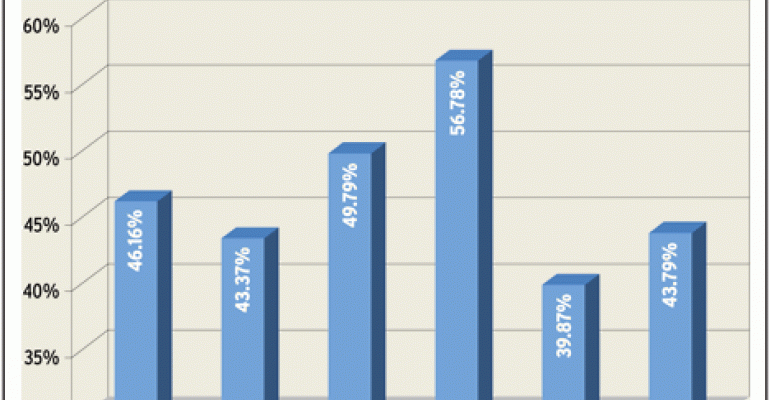You may be pessimistic about the economy, the markets or the dollar but there is little reason whatsoever to be concerned about the state of the financial advisory industry. Results of Registered Rep.’s 2011 Compensation Survey suggest that financial advisors continue to expand their practices, work with more clients and receive ample compensation for their efforts. Over three quarters (78 percent) of the participants took home increased income in 2010 and the vast majority (84 percent) expect their compensation to rise again in 2011. The industry is steadily growing and advisors report high levels of satisfaction with the compensation they receive. Unfortunately though, the industry is also training advisors to expect comp “candy” all the time in the form of recruiting and retention bonuses and, as we know, candy all the time is not healthy.
Much has been written and discussed in the past about the discrepancies and differences between different channels—wirehouses, regional firms, independent broker-dealers (IBDs), RIAs and banks. The Registered Rep. survey suggests these differences may be dissipating and may have been exaggerated. It is notable that more wirehouse advisors (84.7 percent) than RIA advisor reps (73.9 percent) describe the services they offer as “financial planning.” What is more, the Certified Financial Planner designation (CFP) is held by very similar percentages of respondents at RIAs (34.8 percent), IBDs (32.9 percent) and wirehouses (27.9 percent). Firms seem to be targeting the same clients, offering the same description of services (whether the substance of the service is the same may be another matter) and similar qualifications.
And yet, there are still differences, of course. Regional firms and bank brokerages are notably less likely to provide fee-based financial advice, rely more on commissions and work with advisors who generate less revenue. On average, for advisors affiliated with regional firms, about 77 percent of their compensation comes from commissions, versus 64 percent for bank brokerage advisors. About 46 percent of compensation derives from commissions for wirehouse advisors, and 52 percent for IBD advisors. Also, 37 percent of all regional brokerage reps surveyed generate less than $200,000 in revenue compared to 18 percent for wirehouse advisors. Among bank brokerage respondents, nearly a third of advisors generate revenue less than $200,000.
Of course, there are highly compensated advisors in every channel while payouts received by respondents range widely, from over 90 percent (11 percent of respondents) to less than 20 percent (7 percent of respondents). That said, in terms of medians, IBD advisors report the highest overall compensation, with a median of $220,000, compared to $199,000 for RIA advisors and $173,000 for wirehouse advisors. Regional firms had average income of $164,000 per advisor and bank brokerages generated median income of $139,000.
In fact take-home pay is surprisingly similar for wirehouse advisors and IBD advisors, after expenses. On average, wirehouse advisors said they take home 46 percent of the revenue they generate, compared to 57 percent for IBD advisors and only 40 percent for RIA advisors. All percentages seem to be close to what I would expect given the average production but the RIA result is very surprising. Something is either going wrong with the way RIAs mange their expenses of something went wrong with the survey process. Considering the relatively small number of RIA participants in the survey, I am inclined to believe the sample issue hypothesis rather than the expense issue but this is still something to keep an eye on.

While advisors are reporting good levels of satisfaction with their compensation there is a danger that the industry is turning its advisors into jukeboxes—pay to play. The median satisfaction score reported was 3.3 on a scale of 1 to 5, with 5 being the highest satisfaction possible. This high score is tough to correlate to the fact that 28 percent of the respondents are considering changing their broker-dealer. What is very interesting is that those who received a retention package (just over a third of respondents) are most likely to leave their current broker-dealer.
Some 38 percent of these advisors are considering leaving. Every single IBD advisor who received a retention package is considering leaving when it expires.
Giving candy to kids to make them behave does not teach them good behavior—it teaches them how to get candy! This helps to explain why most advisors feel that “New hires get a better compensation than existing advisors.”
When the focus of the industry shifts to recruiting, especially when the firms start using aggressive monetary incentives, the inevitable result is to turn satisfied advisors into “deal shoppers.” While practices are growing and there is a general sense of satisfaction with the compensation advisors receive, the high percentage of advisors who are likely to change firms and the sense that you are missing on a deal if you don’t is putting many broker-dealers in danger. Existing advisors are reporting growth in production of 18 percent in 2011—I can’t help but wonder if any firm can increase its recruiting by 18 percent and if it does how much it will cost. Broker-dealers may be putting their resources in the wrong direction where the return on investment may be lower.
“Compensation” has different meanings across the industry. For some advisors, it is the percentage payout they receive from their company; for others, it is the amount left after they have covered their own expenses (IBD and RIA advisors). Whatever the definition, the industry is growing at healthy rate and so is the compensation of advisors. The profession of being an advisor is becoming more uniformly understood, applied and valued through the pay process. Perhaps the biggest challenge to advisor compensation is whether broker-dealers are messing too much with it.






